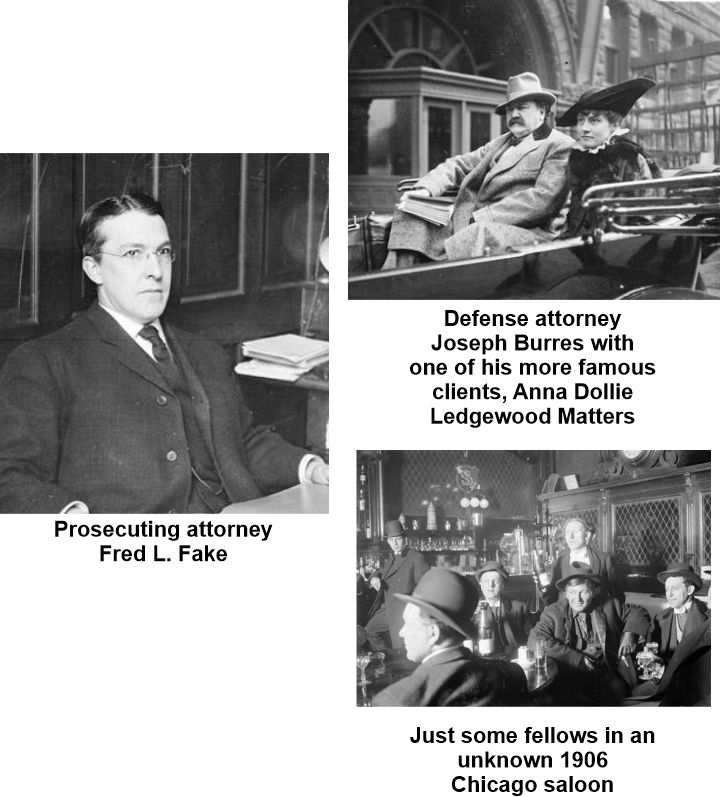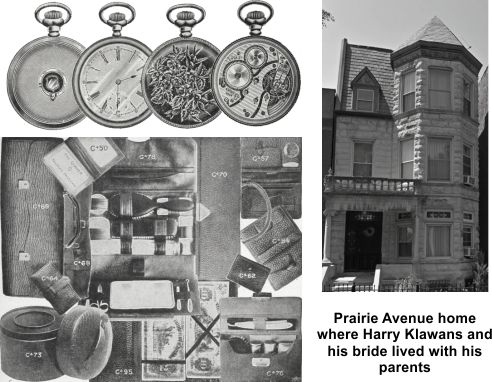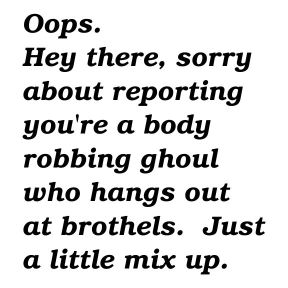|
America's worst theater disaster took place on December 30, 1903
in Chicago when a stage fire at the newly constructed Iroquois
Theater spread to the auditorium and within twenty minutes killed
nearly six hundred people, most of them women and children. With so many
victims, injured, dying and dead, human predators were
quick to take advantage of the situation. Police
reported that street thieves and pickpockets pilfered jewelry from bodies
inside the theater, on the sidewalk in front of the theater,
in body-transport wagons and at morgues. According to
the vernacular of the day, such thieves were labeled
as ghouls and received a great deal of newspaper
coverage. There were references to "hundreds" of loss claims
involving thousands of dollars. The fascination with ghouls was
not unique to the Iroquois Theater fire or Chicago. Six months later when the
General Slocum steamboat sank in New York, there
were also newspaper reports of ghouls and in 1900
after the hurricane in Galveston there had been reports of ghouls.
|
|
|
Pockets full of ears and fingers? Nope.
Some out-of-town newspapers went so far as to
claim that a thief was found with pockets full
of dismembered jewelry-clad fingers and ears
but that he then died in the fire. The story
had a satisfying ghoul-got-his-just-desserts
theme but doesn't pass the hooey test. To have been burned to
death he would have to have been trapped inside
the auditorium to begin with because the fire
was mostly extinguished by the time the doorways
were cleared of bodies enough to enter the
auditorium through either interior or fire
escape doors. The idea that a badly burned
person trapped inside a still burning building
used his last gasping moments of life to snatch
jewel-clad ears and fingers is improbable, and
that his name was not reported in Chicago
newspapers even more so. There was no reason to
conceal his identity and police had ample
motivation to affix blame for missing
possessions. If his name was unknown, his
body would have been left unclaimed and instead
of the city burying one unidentified victim,
there would have been two.
What was repeated multiple times by police and fire
workers is that when they realized cutpurses had
descended on the scene, they chased them off.
Officers were then stationed to keep them away from
the bodies on the sidewalks and wagons outside, and
out of the theater. When crowds grew at morgues,
officers were assigned to crowd control there as
well. Every police officer and fireman in the city
was on the scene so there was no shortage of
available men for the job. Did some slip through?
Probably. The scene was chaotic, but I suspect the
scene described in some newspapers was more yellow
journalism than reality.

Saloon ghouls
When
Helen Trask's body was picked up for transport
to the morgue, saloon owner Louis Witz
turned $11 over to police, along with a gold
neck pendant watch. He pocketed $210, but
spent half his loot to silence would-be
police informers.
|

|
|

Finders Keepers does not apply when it's the property of the dead.
In the late afternoon of the fire, nineteen-year-old
Harry Irving Klawans (1880–1950) was
leaning against the front wall outside the Iroquois
Theater, near the front entrance, doing some rubbernecking.
Hundreds of fireman, police and volunteers were
carrying bodies, working out where to place them,
and loading them onto wagons headed for
hospitals and morgues. Harry's account of what
happened was
more
~~~~~~~~~~~~~
|
|

1904 newspapers around the country reported that a
nineteen-year-old bookbindery employee,
Frank Uhler, had been arrested and confessed
to stealing a 4-1/2 carat diamond ring
valued at $800 ($20k adjusted for
inflation). Reportedly he had taken it from the corpse of an
elderly victim in a wagon outside Jordan's
funeral home, then tried to sell it at a
brothel. Frank finally gave it to his
sister. 'Trouble was, Frank hadn't been
anywhere near the body or the ring. A
newsboy had it all along.
|
|
|
Scanning period Iroquois
Theater headlines gives an impression there was
rampant thievery of corpses, like cockroaches who
swooped in, savaged the dead and fled when swatted
by police officers. Studying the newspaper
stories reveals the many references were to the same
five cases cited below; and only one of these involved
possessions being removed from a body. None involved
street thieves and all were prosecuted. There
might there have been other acts of thievery involving
less costly items that went unreported but I think they
were few in number. Newspapers around the country
were so desperate for stories of the fire that they
published stories about people who only THOUGHT about
attending the matinee, or who walked past the theater
at the beginning of the disaster when the seriousness
was not yet apparent. If a survivor reported that
a coat or muff was lost in the struggle to escape,
newspapers reported it. My sense is that if a
victim's family had mentioned the loss of a dime store
hatpin, newspapers would have reported it. They did
not. To the contrary, in
the days that followed the fire, 4,000 victim possessions were salvaged from the theater
auditorium that had not been plucked by a swarm of thieves.
|
The five cases of Iroquois Theater victim theft:
|
|
|
|
